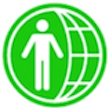Traditional Medicine is now a Proven Remedy
 Tuesday, June 16, 2015 at 11:13AM
Tuesday, June 16, 2015 at 11:13AM

Once dismissed as old fashioned, ineffective and unscientific, traditional medicine is now seen as a key tool in bringing healthcare and healing to poor people bypassed by existing public and private health measures.
Acknowledging traditional medicine as a useful tool goes back to the World Health Organisation’s Alma-Ata Declaration in 1978, which urged governments for the first time to include traditional medicine in their primary health systems and recognise traditional medicine practitioners as health workers. During the last 30 years there has been a considerable expansion in the use of traditional medicine across the world. Despite their ancient origins, it is still critical these medicines do meet efficacy and health standards and are proven to work.
In Mongolia, when the Soviet Union collapsed a decade and a half ago, new market forces meant that supplies of conventional medicines became prohibitively expensive for most of the population. With one doctor for 600 people in the rural areas – and the vast distances to be covered – medical services were virtually unobtainable in rural communities.
This situation led to a revival of Mongolia’s 2,000-year-old traditional medicine. This includes acupuncture, cauterisation, manual therapy, blood letting and therapies using mares’ milk – all integral to the rural way of life.
Research by the Japanese Nippon Foundation – the largest private foundation in Japan – explored how Mongolia’s public health care could be improved through traditional medicine. It focused on the possible use of traditional medicine alongside Western medicine, the depth of faith in traditional medicine, the affordability of traditional medicine, and the lifestyles of herdsmen living in remote areas away from hospitals. The project, launched in 2004, distributes medical kits with 12 types of traditional medicines to households in rural areas. As they use them, the households pay for them. The kits, which mostly target stomach and intestinal ailments and fever, have so far been distributed to 10,000 households (50,000 people) across the country. The Foundation found doctors’ house calls were down by 25 per cent after one year of the project.
In India, Gram Mooligai and its Village Herbs label helps bring quality healthcare to the country’s 170 million rural poor currently left out by public healthcare programmes, or who can’t afford private services. At present, the Indian government has been unable to find adequate funds to provide healthcare to all its people. Gram Mooligai uses a network of 300 women health practitioners to reach villagers who spend on average US $50 a year on health services – so far, they reach 30,000 households. It has built trust with the poor by offering herbal remedies based on India’s strong Ayruvedic heritage of herbal healing. It also draws on India’s rich biodiversity by harvesting medicines sustainably from native plant species – over 18,000 are known.
The company is owned by a network of rural growers that manufacture herbal remedies like Trigul balm for joint pain, Sugam cough syrup and Jwaracin fever reducer. Gram Mooligai combines modern heathcare with local remedies familiar to rural villagers.
The website gives a good example of this folksy approach. In answer to a villager whose daughter is complaining of pain in her legs and back, the villager is advised to give her milk and ghee (clarified butter). “Add nuts and dry fruits to her daily diet in small quantity. If she is lean, then a weekly massage with Lakshadi Thailam (which is available in the Ayurvedic shops) is very useful. Slightly warm the oil before massage and add a pinch of common salt to the oil for better absorption.”
By David South, Development Challenges, South-South Solutions
Published: September 2007
Development Challenges, South-South Solutions was launched as an e-newsletter in 2006 by UNDP's South-South Cooperation Unit (now the United Nations Office for South-South Cooperation) based in New York, USA. It led on profiling the rise of the global South as an economic powerhouse and was one of the first regular publications to champion the global South's innovators, entrepreneurs, and pioneers. It tracked the key trends that are now so profoundly reshaping how development is seen and done. This includes the rapid take-up of mobile phones and information technology in the global South (as profiled in the first issue of magazine Southern Innovator), the move to becoming a majority urban world, a growing global innovator culture, and the plethora of solutions being developed in the global South to tackle its problems and improve living conditions and boost human development. The success of the e-newsletter led to the launch of the magazine Southern Innovator.
Follow @SouthSouth1
Google Books: https://books.google.co.uk/books?id=73-VBgAAQBAJ&dq=development+challenges+september+2007&source=gbs_navlinks_s
Slideshare: http://www.slideshare.net/DavidSouth1/development-challengessouthsouthsolutionsseptember2007issue
Southern Innovator Issue 1: https://books.google.co.uk/books?id=Q1O54YSE2BgC&dq=southern+innovator&source=gbs_navlinks_s
Southern Innovator Issue 2: https://books.google.co.uk/books?id=Ty0N969dcssC&dq=southern+innovator&source=gbs_navlinks_s
Southern Innovator Issue 3: https://books.google.co.uk/books?id=AQNt4YmhZagC&dq=southern+innovator&source=gbs_navlinks_s
Southern Innovator Issue 4: https://books.google.co.uk/books?id=9T_n2tA7l4EC&dq=southern+innovator&source=gbs_navlinks_s
Southern Innovator Issue 5: https://books.google.co.uk/books?id=6ILdAgAAQBAJ&dq=southern+innovator&source=gbs_navlinks_s

This work is licensed under a
Creative Commons Attribution-Noncommercial-No Derivative Works 3.0 License.